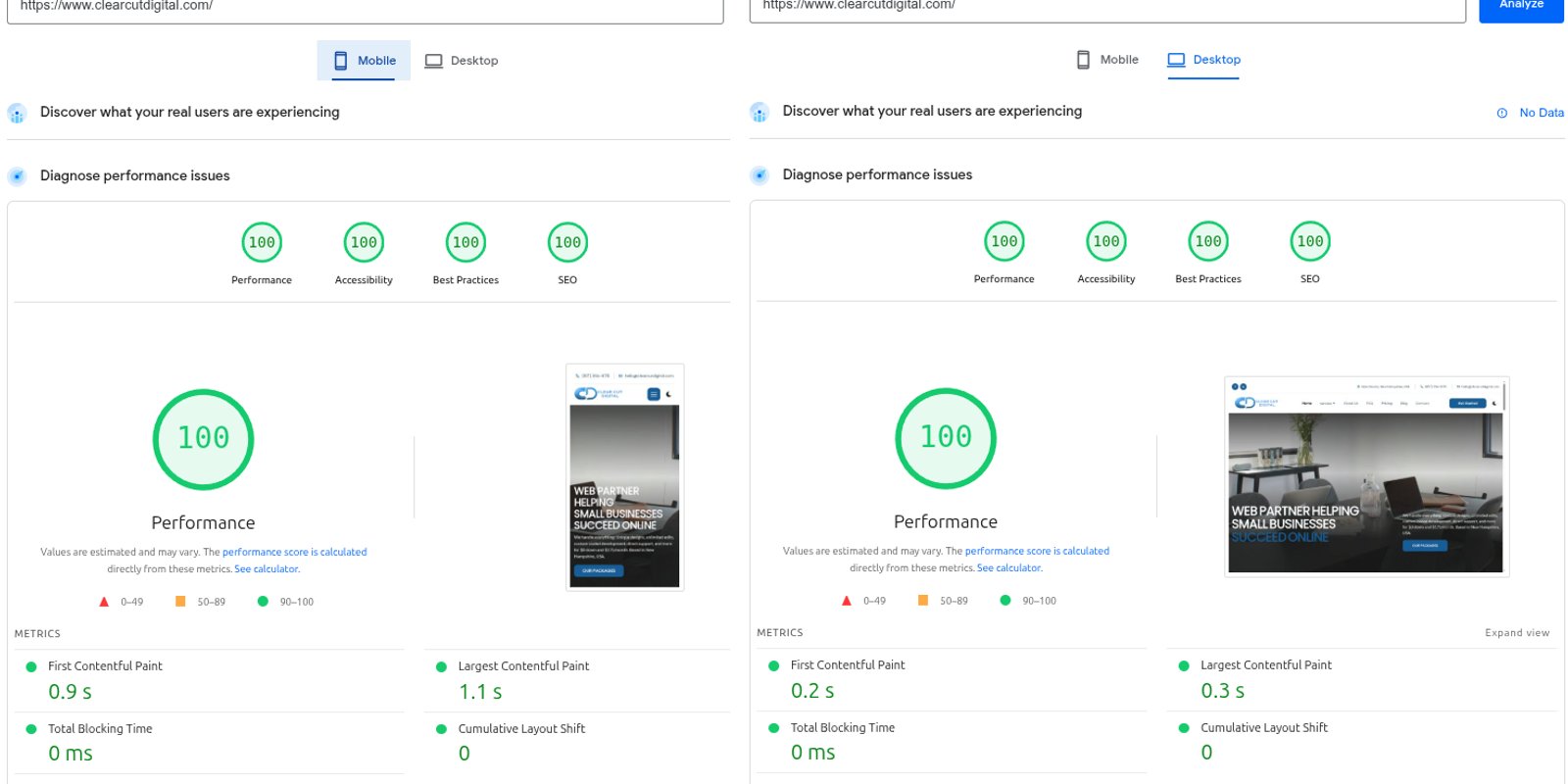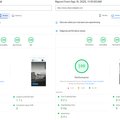Website Speed: The Hidden Factor That Boosts Your Google Rankings
Every second your site takes to load, you risk losing potential customers. What's interesting is that in a 2016 study commissioned by Google, they found that after only 3 seconds of waiting, 53% of people on phones clicked off the page and went to a different website. With the way attention spans are today, this is likely much worse. Most small business websites are slower than they should be, and that costs real money. Customers leave before they even see your services. Your competitors then scoop up those leads. That's the slow website cost in action.
Here is the good news. If your website loads fast, you will get more visitors to stick around, then explore your services, and take action. Improving website speed is one of the fastest ways to increase conversions without spending on ads. The speed of a mobile website is essential since 63% of people browse the web on their phones, and Google takes this into account, which is called Mobile First Indexing.
This website speed guide will go over some secrets of how we get perfect 100/100 scores on both mobile and desktop, how to test your website, interpret the scores, and make effective improvements. By the time you finish reading, you will know exactly how to make your small business website faster, improve visitor retention, and turn more clicks into paying customers. The results are measurable. Faster load times mean higher search rankings, which brings more visitors, which should improve revenue.
The Four Main Scores in Google PageSpeed
For small business owners, Google PageSpeed Insights is a straightforward way to get a measurable view of how your website's performance metrics and where improvements will increase visitors, conversions, and ultimately revenue. When you run a website speed test, PageSpeed Insights gives you four scores. Think of them as your website's health report card. Each score ranges from 0 to 100 and directly correlates to a more reliable experience for your potential customers.
Performance
Performance measures how quickly your website loads for visitors. If your performance score is low, potential customers may leave before seeing your content, increasing the chances they get impatient and leave. Some things you can do to boost performance include compressing images, minifying JavaScript, reducing server response times, and using browser caching. These are practical steps that directly improve website loading fast. Unfortunately, if you are using a website builder such as Wix, Squarespace, or Weebly, there may be limitations.
Accessibility
Accessibility ensures everyone can use your site, including people with disabilities. A high accessibility score broadens your audience, demonstrates professionalism, and avoids potential legal issues. Accessible websites have proper color contrast, are navigable by a keyboard, are screen reader-friendly, and can even improve search rankings because Google favors sites that work for everyone. We make sure images have proper alt text and there are clear headings, which makes a big difference.
Best Practices
The Best Practices score checks your site against modern coding and security standards. A high score means there are likely fewer glitches. Optimizing code, fixing broken links, and ensuring HTTPS (SSL) are easy steps that go a long way. No one wants to see "your connection may not be secure" when trying to access your website, which is a huge red flag.
Search Engine Optimization (SEO)
SEO measures whether your website is structured in a way Google can understand. SEO includes proper meta tags, structured data, and clean URLs. Even if your website looks great, a low SEO score can mean fewer people see it in search results. Improving your website SEO score increases visibility, drives more organic traffic, and gives your small business an edge over competitors.
High scores in all four areas directly correlate to better user experience, increased visitor retention, and more conversions. Small business websites that take action on these metrics see measurable results in traffic, engagement, and ultimately revenue.
The Technical Metrics Explained
Understanding the four PageSpeed Insights scores is just the first step. To really improve your website speed and get more visitors, you need to look under the hood at the technical metrics. These numbers tell you exactly how fast your site feels to real users and where you can take action to improve performance. The good news is, you do not need to be a developer to understand them or fix the most common problems.
First Contentful Paint (FCP)
FCP measures how quickly the first piece of content appears on your page. A slow FCP frustrates visitors and increases bounce rate. For small business owners, improving FCP means your customers see something meaningful almost immediately, giving them confidence to stay on your site. Ways to strengthen FCP include optimizing images, loading critical CSS first, and minimizing render-blocking scripts. How we get ours so low is that we split our CSS into local.css for below-the-fold content and critical.css for above the fold. This way, only what's necessary loads first, and the rest comes after the essentials.
Largest Contentful Paint (LCP)
LCP tracks how long it takes for the main part of your page to load, usually the hero image or headline. Slow LCP is one of the biggest reasons people leave a site before engaging. Small business websites that improve LCP retain more visitors, generate more leads, and convert more clicks into customers. Optimizations include compressing large images, using modern image formats like WEBP, and using a fast hosting provider. We like to use AVIF as a primary for modern browsers, WEBP as a backup for slightly outdated devices, and PNG or JPG for old devices. We do this to take advantage of modern formats to maximize quality with the best compression while still being accessible to all devices.
Total Blocking Time (TBT)
TBT measures how long JavaScript prevents your page from listening to what users do. High TBT can make your site feel frozen, frustrating visitors. We reduce or eliminate TBT by minimizing JavaScript, deferring non-critical scripts, and removing unused code. For a small business website, this translates directly into better user experience and more conversions. We take a minimalist approach by only using necessary JavaScript. This way, we don't have security/hacking concerns, minimize errors in the console, and minimize bloat. For developers: You can accomplish quite a bit in CSS; we use SCSS to extend the capabilities of CSS, which allows us to easily create custom animations and functions without relying on JavaScript!
Cumulative Layout Shift (CLS)
CLS has to do with unexpected shifts of page elements while your site loads. You know the frustration of trying to click a button and having it jump somewhere else? That is CLS. High CLS reduces trust and increases bounce rates. Fixing CLS often involves specifying size attributes for images and videos, ensuring ads or pop-ups do not shift content unexpectedly, and managing fonts that load dynamically.
Speed Index
Speed Index shows how quickly the visible content on your page fills the screen. A fast Speed Index keeps visitors engaged, increases time on page, and reduces the chances of them leaving before seeing your services. You can improve Speed Index by compressing files, reducing server response times, and using lazy loading for images.
Google groups these technical metrics into Core Web Vitals, and they directly influence your website's rank on Google. Improving them makes your website faster, keeps users happy, and gives your business more opportunities to convert visitors into customers. Mobile website speed is especially important because the majority of traffic now comes from phones, and slow mobile load times can cost leads and sales before a visitor even sees your content.
Why Website Speed Impacts Your Business
Website speed is not just a technical concern. For small business owners, it is one of the most important factors that determines whether visitors stay, engage, and become paying customers. Every second your website takes to load affects your bottom line. The slow website cost is real and measurable.
When your site is slow, visitors leave before exploring your services. That increases your website bounce rate, reduces the chances of a sale, and can make your marketing efforts less effective. On the other hand, a fast website keeps users engaged. Improving website performance and website loading fast directly increases conversions. Customers are more likely to complete contact forms, make purchases, or call your business when the website responds instantly.
Search engines also notice. Google uses page speed and Core Web Vitals as ranking factors. A site that performs well ranks higher, driving more organic traffic and increasing visibility. Mobile website speed is especially important because the majority of customers are on phones. Sites that fail mobile users lose leads to competitors who prioritize speed.
Website performance optimization goes beyond just speed. Accessibility, best practices, and SEO scores all contribute to trust, user experience, and search visibility. Small businesses that actively improve these areas often see measurable increases in traffic, higher rankings on Google, and more revenue from their online presence.
Investing in website speed is investing in your business's growth. Visitors notice a fast, reliable website, stay longer, and are more likely to convert. Improving website loading and performance is one of the easiest and most effective ways to make your website work harder for you.
Clear Cut Digital Guarantee
At Clear Cut Digital, we focus on website speed and practical results. Every small business website we build is designed to load quickly, perform reliably, and turn visitors into customers. Our approach is hand-coded, lightweight, and centered on measurable improvements in website performance optimization, mobile website speed, and small business SEO.
We aim for 90+ scores in Performance, Accessibility, Best Practices, and SEO for every website. Many sites score closer to 100 thanks to attention to images, scripts, and design. A fast, optimized website improves user experience, keeps visitors engaged, and supports better conversions.
Small business owners working with us notice improvements quickly. Visitors spend more time on the site, bounce rates decrease, and more users take action. Google favors fast, high-performing sites with better rankings, which increases organic traffic and visibility.
A Clear Cut Digital website is built to function efficiently across desktop and mobile devices. The benefits are measurable: more visitors, higher engagement, and more revenue for your business. We support our work with $0 down and $150/month plans, which include unlimited edits, 24/7 support, hosting, and long-term guidance to help your website continue delivering results.






